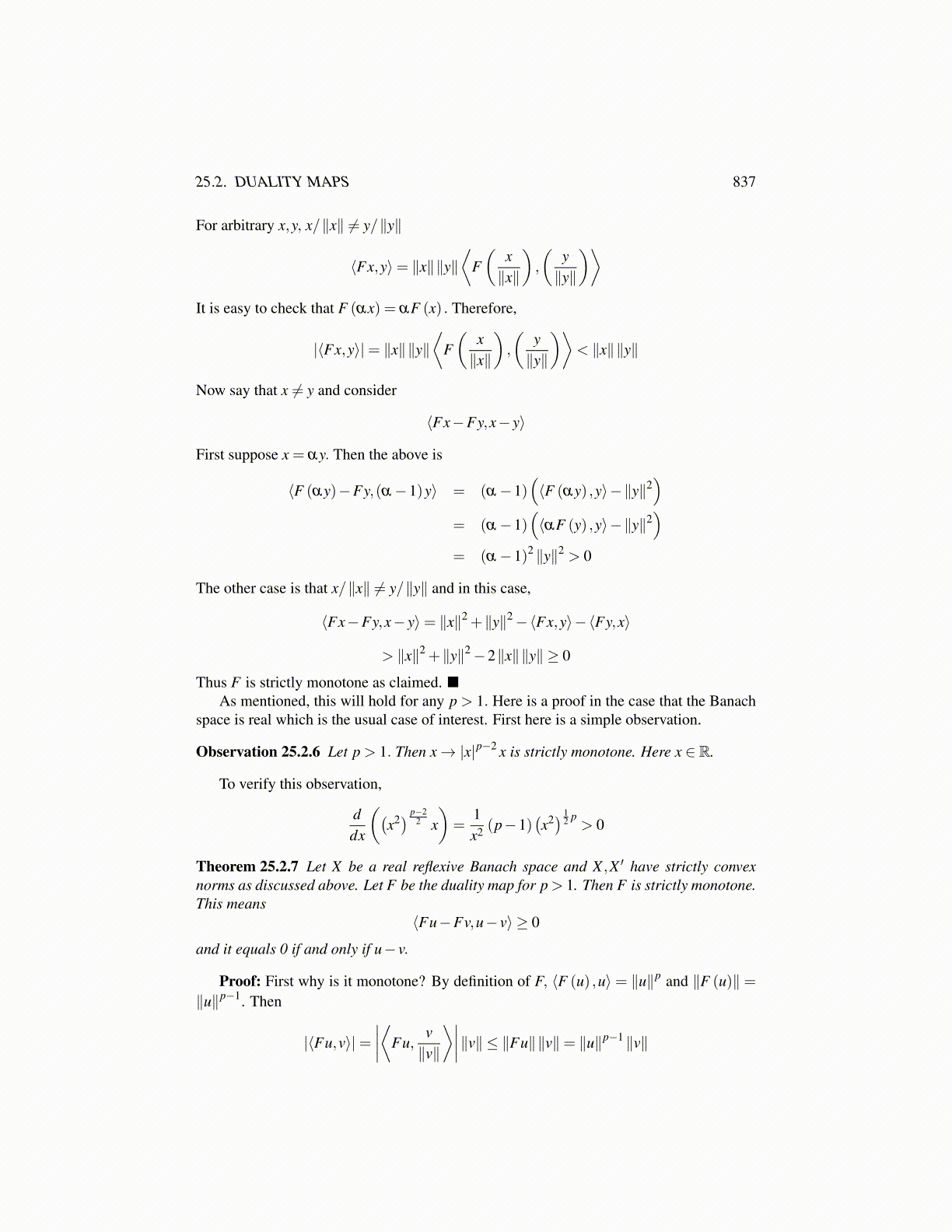
25.2. DUALITY MAPS 837
For arbitrary x,y, x/∥x∥ ̸= y/∥y∥
⟨Fx,y⟩= ∥x∥∥y∥⟨
F(
x∥x∥
),
(y∥y∥
)⟩It is easy to check that F (αx) = αF (x) . Therefore,
|⟨Fx,y⟩|= ∥x∥∥y∥⟨
F(
x∥x∥
),
(y∥y∥
)⟩< ∥x∥∥y∥
Now say that x ̸= y and consider
⟨Fx−Fy,x− y⟩
First suppose x = αy. Then the above is
⟨F (αy)−Fy,(α−1)y⟩ = (α−1)(⟨F (αy) ,y⟩−∥y∥2
)= (α−1)
(⟨αF (y) ,y⟩−∥y∥2
)= (α−1)2 ∥y∥2 > 0
The other case is that x/∥x∥ ̸= y/∥y∥ and in this case,
⟨Fx−Fy,x− y⟩= ∥x∥2 +∥y∥2−⟨Fx,y⟩−⟨Fy,x⟩
> ∥x∥2 +∥y∥2−2∥x∥∥y∥ ≥ 0
Thus F is strictly monotone as claimed.As mentioned, this will hold for any p > 1. Here is a proof in the case that the Banach
space is real which is the usual case of interest. First here is a simple observation.
Observation 25.2.6 Let p > 1. Then x→ |x|p−2 x is strictly monotone. Here x ∈ R.
To verify this observation,
ddx
((x2) p−2
2 x)=
1x2 (p−1)
(x2) 1
2 p> 0
Theorem 25.2.7 Let X be a real reflexive Banach space and X ,X ′ have strictly convexnorms as discussed above. Let F be the duality map for p > 1. Then F is strictly monotone.This means
⟨Fu−Fv,u− v⟩ ≥ 0
and it equals 0 if and only if u− v.
Proof: First why is it monotone? By definition of F, ⟨F (u) ,u⟩ = ∥u∥p and ∥F (u)∥ =∥u∥p−1. Then
|⟨Fu,v⟩|=∣∣∣∣⟨Fu,
v∥v∥
⟩∣∣∣∣∥v∥ ≤ ∥Fu∥∥v∥= ∥u∥p−1 ∥v∥